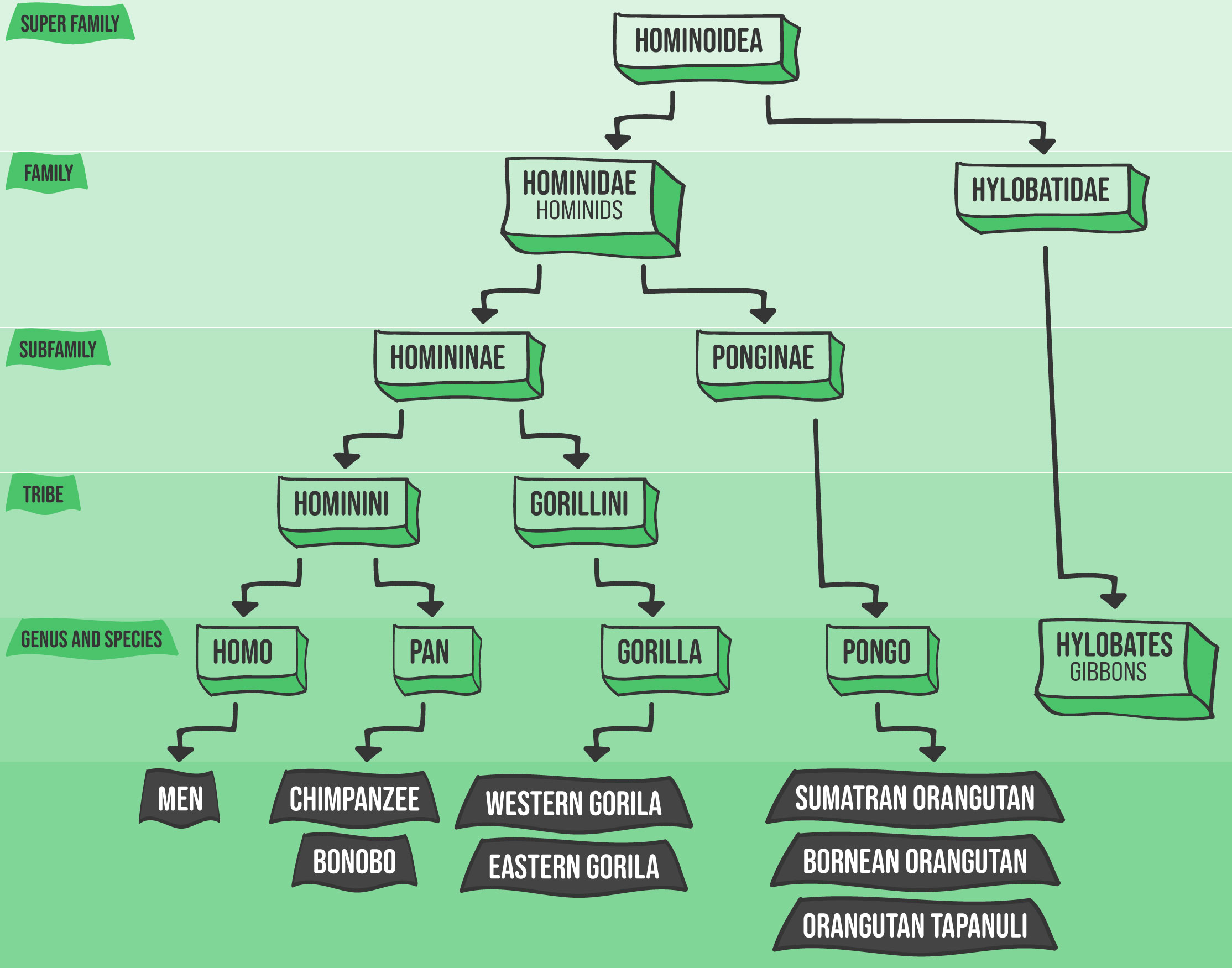In general terms, it is possible to state that there are five great primates – chimpanzees, bonobos, gorillas, orangutans and men/humans.
We share similar evolutionary traits, such as, for example, the absence of a tail, a more complex brain, and hands with opposable thumbs; in addition to cognitive similarities such as mirror image recognition, ability to communicate through language, and creation and use of tools.
More contemporary analyzes of the evolutionary tree suggest a new definition, classifying all great apes as hominids. About 18 million years ago, the superfamily Hominoidea branched into the families Hominidae (hominids) and Hylobatidae (modern-day gibbons). From there, there is the classification of species popularly called great primates.
ENDANGERED SPECIES
Non-human great apes live in tropical rainforests in western and central Africa and Southeast Asia. All 7 species that are part of this group are classified as threatened or endangered, that is, their population in nature is decreasing at a pace that generates an imminent risk of extinction. The main causes are the destruction of its habitat and poaching for illegal trade.
DID YOU KNOW?
Great primates cannot be called monkeys (primates). In addition to not having tails, apes or apes (synonyms of great primates) are considered more cognitively advanced (smarter), for all the reasons mentioned above.
Gibbons fall somewhere in the middle and are classified as “lesser apes”. They descended from the same superfamily Hominoidea, but branched out into the family Hylobatidae. Although they also lack tails, gibbons are smaller and do not have the same cognitive abilities as members of the Hominidae family (hominids).


 Español
Español
 Português
Português




